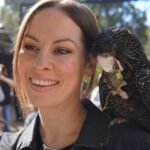The newly-launched Curtin Institute of Radio Astronomy (CIRA) will play a key role in a multi-million dollar project launched by the Western Australian government recently.
The University will establish a specialised section of CIRA to focus specifically on projects associated with the $20 million International Radio Astronomy Research Centre (IRARC), a state government initiative aimed at securing the $2 billion Square Kilometre Array for Australia.
Deputy Vice-Chancellor of Research and Development, Linda Kristjanson said the University was well positioned to contribute high-level expertise to IRARC.
‘Radio astronomy is a key research focus for Curtin and we have made substantial investments in this area over the last 18 months to ensure excellence in the capacity of our team,’ she said.
‘The launch of CIRA is a significant milestone and we are committed to strongly supporting IRARC in both expertise and funding.’
CIRA Co-Director Professor Peter Hall said CIRA would be aiming to maximise the impact of IRARC, by producing graduates with skills across a number of disciplines such as astronomy and electrical engineering, and developing a number of innovations.
‘Things like a new astrology instrumentation development program and new antennas for signal processing,’ he said.
‘Also new computing methodology, and the linking of telescopes across continental distances.’
CIRA will also have a pronounced involvement at board level, with Professor Hall and his Co-Director of CIRA, Premier’s Fellow Professor Steven Tingay, serving as Deputy Directors of IRARC.
Professors Tingay and Hall both have a distinguished track-record of contribution to the SKA project, both nationally and internationally. Until his appointment to Curtin, Professor Hall was the SKA International Project Engineer, responsible for much of the system design and many policy initiatives.
Professor Tingay served as Chair of the Simulations Working Group, a key body in the site short-listing process. The two have key roles in the SKA design process now under way and are involved with important SKA pathfinder projects being constructed in WA.
Both Professors Hall and Tingay are currently contributing to a series of international SKA policy and working meetings underway in Cape Town, South Africa. Professor Hall is chairing a new international task force on SKA energy matters, a pivotal consideration in the design and operation of the instrument.
Professor Tingay is preparing for an “SKA readiness” event in early March in which he and his colleagues will demonstrate the feasibility of very high speed data transmission and processing for a number of interconnected radio telescopes spaced across the Australian continent.

